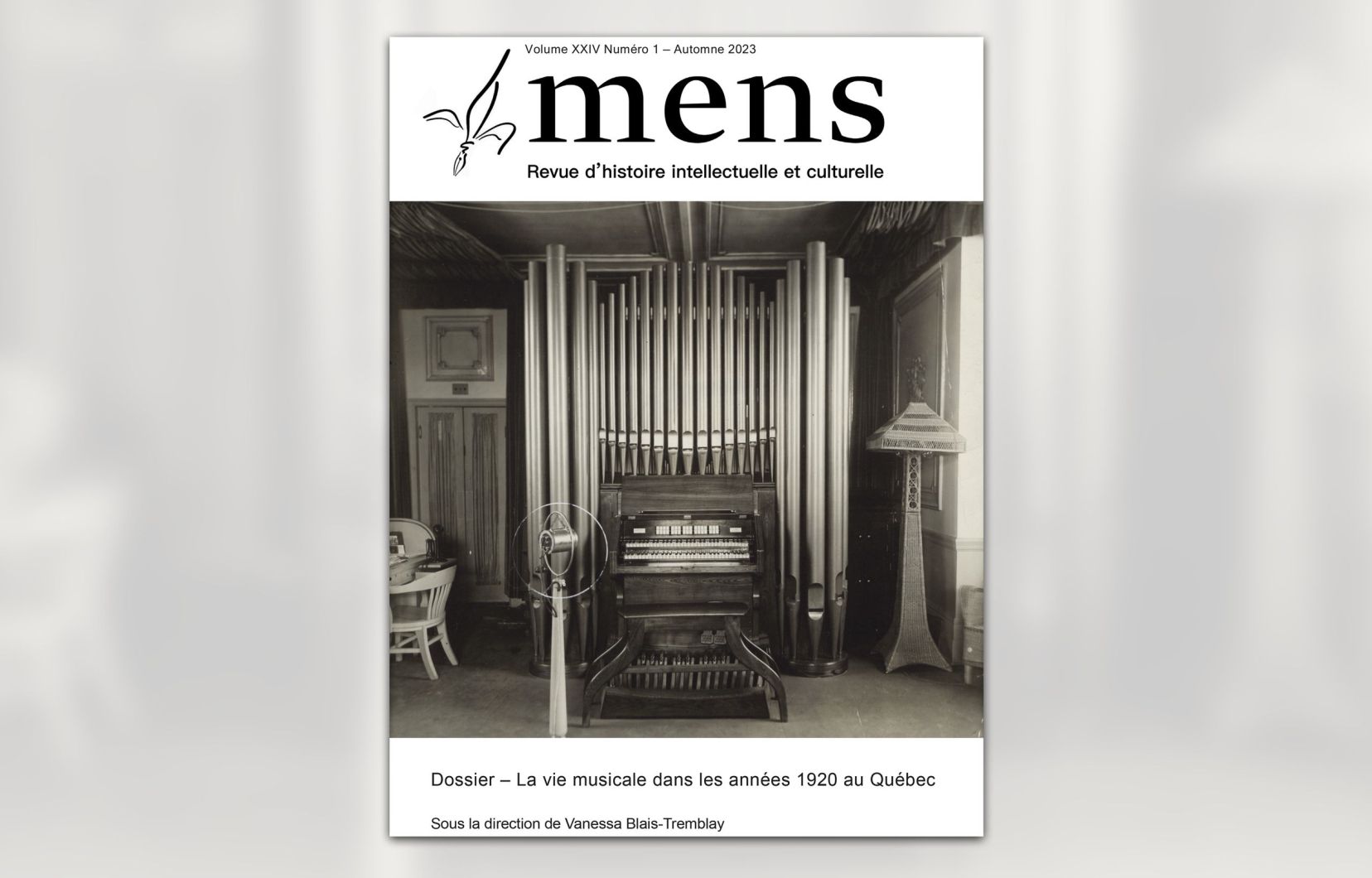Every Tuesday, Duty offers a space to the creators of a periodical. This week, we offer you a text published in the magazine Mens, vol. 24, No. 1 (Fall 2023).
The 1er July 1928, Sherbrooke Street was lined with crowds as far as the eye could see, from La Fontaine Park to Atwater Avenue. In the distance, we hear the sounds of horns and motorcycles. The police chief arrives in an open car, followed by firefighters and a marching band playing marches and patriotic melodies.
The directors of the Saint-Jean-Baptiste Society come next, then the veterans of the Great War, a car filled with red peonies carrying young women, and a troupe of gymnasts. Finally, the title float of this Saint-Jean-Baptiste parade: “Our popular songs”.
Around thirty allegorical floats follow him, each presenting a living tableau evoking one or more traditional songs, such as This is our grandfather Noah, Malbrough goes to war And Rolling my ball. Traditional song here becomes the metonym of French-Canadian national identity, put at the service of clerical-nationalist values. In the 1920s, however, Montreal urban life was much richer in contrasts.
The day before the parade — postponed for a week due to rain — the city’s population can attend silent films, vaudeville shows, dance evenings and musicals. On June 30, it’s the first Montrealer of Happiness Aheada film released in the United States just the week before.
The same theaters that show silent films also present the shows of vaudeville performers who perform regularly in Los Angeles, Chicago, Washington, Atlanta and other American cities. Concerts and dance music are broadcast on the radio, live from some hotels and theaters.
At Dominion Amusement Park, you can hear music every afternoon through $5,000 worth of speakers. It is this Montreal musical life strongly influenced by North American entertainment circuits and by new sound technologies that the Saint-Jean-Baptiste parade opposes by offering, from the point of view of its organizers, a rampart against the dissolution of French-Canadian identity.
Urban exodus
At the turn of the 20the century, large-scale population movements seemed to mark the end of the essentially agricultural way of life in Quebec, thus raising concerns about the very preservation of the French-Canadian “race”. These concerns are reflected in the emerging regionalist movement in literature and the visual arts, which sought to reaffirm “the dignity of traditional peasant culture”, according to Denis Saint-Jacques and Marie-José des Rivières, and to “promote the return to the earth,” according to Maurice Lemire.
Our research highlights links between the actors of the regionalist movement and those of the folklore community at the beginning of the 20th century.e century, for example the anthropologist Marius Barbeau, close collaborator of the archivist Édouard-Zotique Massicotte, himself older brother of the renowned illustrator and designer of the theme of the Saint-Jean-Baptiste parades in Montreal from 1924 to 1946, Edmond-Joseph Massicotte.
Massicotte and the organizers imagined a parade that would not only be a visual experience, but also an audio, performative and interactive experience. On the allegorical float entitled “Le Foulon”, for example, “fullers of cloth singing[ent] while working.” These musicians were none other than popular singer Charles Marchand and his Bytown Troubadours, dressed in plaid shirts and performing in harmony such songs as Let’s send our people forward And It’s the oar that takes us.
Throughout the parade, interspersed between the floats, are dozens of school, parish, military and other bands, which play the different songs represented by the adjacent floats. According to The Gazettewhen these brass bands perform the most famous songs, hundreds of voices rise in unison with them.
National spirit
The organizers of the parade hoped that this event would serve to revive the national spirit among the working class as well as the fondness for agricultural life. However, it is likely that the crowd perceived this spectacle, consisting of cars, motorcycles, gymnasts, soldiers from the Great War, marching bands, complex harmonizations and extravagant floats, more as a form of entertainment urban popular than as a reflection of the French-Canadian “we”.
On these allegorical floats, French-Canadian identity is represented by loggers in the construction sites and residents in the villages, but never by city workers. This representation reinforces the regionalist imagination according to which French Canadians will always remain rooted in traditional peasant culture.
This idealization of rural life is a form of denial of the execrable living conditions of the urban working class and an incitement to people who belong to this social class to return to the countryside to reclaim their cultural heritage and find a place there. happy and healthy life. In doing so, she brushes aside all the reasons why people had migrated to the city in the first place.
Comments or suggestions for Ideas in Review? Write to dnoel@ledevoir.com.
